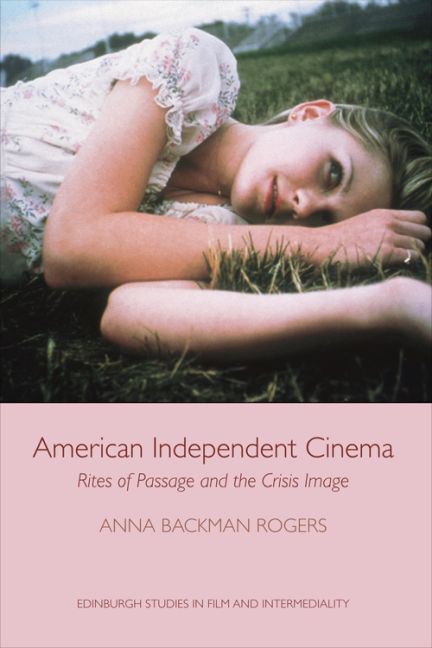Summary
A CINEMA OF CRISIS; A CINEMA OF THE THRESHOLD
American independent cinema is certainly a cinema in crisis, but it is also a cinema of crisis. A great deal of useful scholarship has been carried out on the notion of independence and the definition of indie cinema as a hybrid industry (‘indiewood’). This study partakes of that conversation, but from the perspective of the aesthetics and poetics of crisis that figure or visualise notions of ambiguity and the in-between. In contrast to a scholar such as Geoff King (2013), who has recently defined the crisis of indie cinema in industrial terms, the cinema of crisis delineated here is one that explores the difficulty or impossibility of progression through extended moments of liminality and threshold. Nominally, this might seem like a study of narrative structure or classical modes of storytelling, since all narrative film, to a certain extent, can be said to be about a moment of crisis. However, in a cinema of crisis, the concept of a plot is subservient to the investigation of what it means to exist in a moment of threshold within the context of a rite of passage; this moment may usher in transformation, or it may lead to stasis and not offer any form of resolution. What the viewer sees on screen are bodies that may halt, falter, freeze and become-surface, or evolve, mutate, dissolve and merge: these are bodies in crisis because they are either atrophying or becoming-other.
To be clear, this is not an ethnographic study; the subject of this book is how certain American independent films appropriate ritual as a kind of power of the false in order to throw into crisis images – such as the cliché – that pertain to truth via collective comprehension. In his study of genre, Steve Neale (2000) has outlined how certain images and sound tracks can function ritualistically and ideologically; cinema, according to Neale, both creates a horizon of expectations for an audience and also draws upon existing stratifications and categories in order to shore up established identities and modes of thought. When these visual and sonic rituals are retranslated as the signifiers of breakdown and failure, this indicates a crisis of understanding on a much deeper level.
- Type
- Chapter
- Information
- American Independent CinemaRites of Passage and the Crisis Image, pp. 1 - 23Publisher: Edinburgh University PressPrint publication year: 2015



